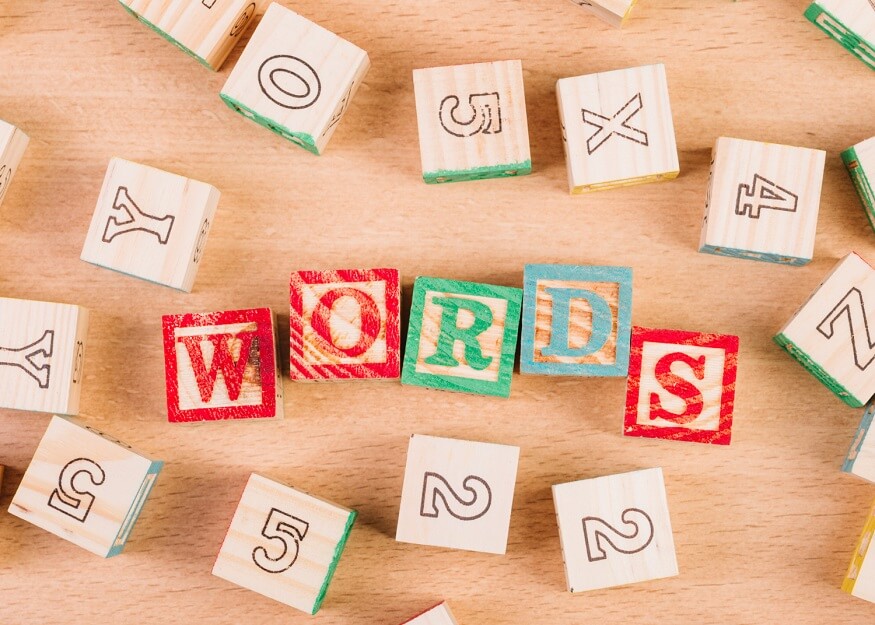Rhyming has been an essential part of art and music for ages. From nursery rhymes to Shakespeare poems, hip hop songs to country ballads. Rhyming words are very helpful in expressing our thoughts, feelings, and emotions, and sharing our stories in a lovely way.
Rhyming words in English are the unsung heroes of the language. They are words with the same ending sound that can be used for poetry, melody, or even hilariously conveying messages. Rhyming words for kids can also be an effective technique for learning English. Kids can improve their pronunciation, fluency, and cognitive capacities by using rhyming words.
Using rhyming words in English language:
The most wonderful thing about rhyming words in English is, one can instantly become a poet by using them in sentences. For example:
My friend ate a whole pie,
And now he’s feeling quite shy
I saw a cat in a hat,
He was sitting on a mat.
The mouse ran through the house,
And scared the cat and her spouse.
The rhyming words used, Pie- Shy, Hat- Mat, and House-Spouse have turned those simple sentences into a poem or at least something similar to a poem. It’s not about what you say, it’s all about how you say that message. Adding rhyming words to your message is like the frosting on the cupcake or the cherry on top of the sundae.
According to the Oxford Learner’s Dictionary, rhyming words meaning is “a word that has the same sound as another word or ends with the same sound as another word”. In other words, rhyming words meaning is “a strong regular repeated pattern of sounds or movements.” Let us look at the uses of rhyming words in English language.
Adding a musical touch:
“Twinkle, twinkle, little star, how I wonder what you are”, we know you are singing the popular nursery rhyme in your mind as you read. This famous nursery rhyme song uses end rhyme to produce a sing-song quality that has helped many generations to remember and repeat this song.
Rhyming words give speech and writing a melodic feel. This is especially effective in poetry and song lyrics, where rhyming words can be repeated to create a memorable and enjoyable rhythm.
Making language more interesting:
In the popular balcony scene of Shakespeare’s evergreen “Romeo and Juliet,”, rhyming words such as “night” and “light,” “love” and “glove,” and “seen” and “queen,” creates a poetic and romantic ambiance, which makes the scene memorable.
Rhyming words for kids can make the language more interesting and engaging for them to learn. They can give a vibrant, creative, and imaginative aspect to language that pulls readers and listeners.
Expressing emotions:
Rhyming words can communicate emotion and convey a particular mood or feelings. The repeated use of rhyming words may boost the intensity and highlight the emotion being expressed.
Rhyming lines in Eminem’s song “Lose Yourself,” like “knees” and “sleeve,” “mom’s spaghetti” and “nervous,” and “palms” and “calm,” creates a tense and anxious state of mind that conveys the character’s internal struggles and emotions.
Advertising and Branding:
To make advertising slogans more memorable and interesting, rhyming words are often used. How can we forget the famous McDonald’s slogan, “I’m Lovin’ It”.
Rhyming words can also be used for creating catchy brand names. For example, Dunkin’ Donuts, KitKat, and PayPal, where simple, subtle, and memorable rhyming structures are used.
Humor and Jokes:
Rhyming words can be used to create funny situations or jokes. The combination of two words that sound similar but have different meanings can be highly comical.
“Why was the math book sad? Because it had too many problems.” To generate a hilarious punchline, this joke uses a play on words, internal rhyme, and humorous anthropomorphism.
Also Read: Daily New Words for Kids
Different types of rhyme:
There are various types of rhymes in english language. They have been listed & explained below –Perfect Rhyme:
In English, perfect rhymes are the most common sort of rhyme. In a perfect rhyme, the vowel sound and the consonant sound at the end of two words will be the same. For example, the words “cat” and “hat”, “ball” and “hall”, rhyme perfectly because they end with the same vowel and consonant sounds.
Slant Rhymes:
Slant rhymes are words that have similar but not identical sounds at the end of the sentence. They are also known as half-rhymes or near-rhymes. For example, “moon” and “bone”, Bridge and grudge, Clean and green, Watch and match. In Slant rhymes two words begin with the same vowel sound but end with different consonant sounds.
Eye Rhymes:
Also known as sight rhymes, these rhyming words have similar spellings but do not sound the same. They have different pronunciations. For example, Love and move, Live and give, Blow and now, and Bough and through.
Eye rhymes can be used in poetry to create a visual pattern or to highlight the visual look of the words rather than their sounds.
Internal Rhyme:
Internal rhymes occur when rhyming words appear in the same line of poetry or song. For example, “Once upon a midnight dreary, while I pondered, weak and weary” is a well-known line from Edgar Allan Poe’s “The Raven” which uses internal rhyme.
Another popular example of Internal rhymes is “Double, double toil and trouble; Fire burn and caldron bubble” – William Shakespeare, “Macbeth”. Internal rhymes help to create a sense of rhythm and structure.
Assonance:
In assonance, the vowel sound is repeated but the consonant sounds are different. For example, in “I feel the need for speed”, the famous dialogue from the Top Gun movie, the vowel sound of the words need and speed are the same but consonant sounds are different at the beginning and end.
Assonances are used to create a sense of rhythm, recurrence, and melody in writing, and also to highlight specific words or phrases.
Also Read: How to Speak English Language Fluently
Benefits of Rhyming words for kids:
Rhyming helps children develop phonemic awareness, or the ability to differentiate and manipulate sounds in spoken language. Learning how to read and write requires this skill.
Kids are introduced to new words and this helps them improve their vocabulary. It also helps in understanding words and their meanings.
Rhyming words for kids helps them remember data more easily. It can boost memory and help them learn more quickly.
Rhyming helps children to be creative and innovative with the words they use. This ability can help them express themselves more clearly and communicate more effectively.
Also Read: 10 Ways to Improve Your Children’s Speech
Conclusion:
EuroSchool is mindful of the uses and benefits of rhyming words in the English language. We can enjoy the beauty and power of language a lot more if we understand the meaning and structures of rhymes. The EuroSchool campus is one such place where we encourage our kids to learn the languages in a more fun-filled way. Visit our campus to know more.










